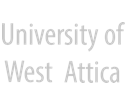Determining institutional discrepancies for ERM software applications
Abstract
This paper is aimed at finding out the preferential criteria in determining institutional discrepancies for Electronic Records Management (ERM) software development. The research objectives include: a) definition of the basic factors determining discrepancies in ERM applications, and b) how the basic factors should managed in ERM projects.
In ERM applications, a comparative study has been carried out in order to see which functions occurred according to different institutional needs and to determine the basic factors forming the discrepancies between selected institutions. Effective parameters variant to institutions are determined according to the discriminant analysis on project phase.
Türksat has not as much diversity as Ankara University in business processes, and it differs from other public institutions because of its incorporated society. Undersecretariat of Treasury is a typical public institution and its business processes and records flows are more appropriate to be standardized. In the transition process to ERM, not only institutional necessities and discrepancies, but also an opportunity for working scalable and flexible software allowing operating these elements has importance. The differences in organization system and management policies and the growths of incoming-outgoing records of institutions necessitate different structuring in ERM applications.
Keywords
References
Apaydın, F. (2009). Kurumsal teori ve iletmelerin kurumsalla ması. C.Ü. ktisadi dari Bilimler Dergisi, Vol.10 No.1, pp. 1-23.
Bayram, Ö. and Özdemirci, F. (2011). “Transition Process of E-records Management and Archiving System in Universities: Ankara University”. International Conference on Integrated Information, IC-ININFO. Proceedings of the International Conference on Integrated Information (IC-ININFO 2011) September 29 -October 3, 2011, Kos island, Greece http://pubs.i-ias.org/aipm/index.php?option= com_k2&view=item&id=16: proceedings- icininfo-2011&Itemid=29 (Accessed: 21/8/ 2012).
Bayram, O., Özdemirci, F., Güvercin, T. (2013). Developing Electronic Records Management Software Applications and Managing Institutional Differences: A Comparative Study, Procedia - Social and Behavioral Sciences, Vol. 73, No 27, 526-533
Bearman, D. (1992). “Diplomatics, Weberian bureaucracy, and the management of electronic records in Europe and America”, The American Archivist, Vol. 55, 168-81.
Broady-Preston , J., Hayward, T. (2001). Strategy, information processing and scorecard models in the UK financial services sector, Information Research, Vol. 7 No. 1, Available at: http://informationr.net/ir/7-1/paper122.html (Accessed 21 August 2012).
Giannakopoulos, G., Kyriaki - Manesi, D., S. Zervos. (2012). «Teaching information as an integrated field: Assessing the Curriculum of the LIS Dept of the TEI of Athens», Education for Information, Vol.2 No.2, pp. 163-178.
The Dublin Core Metadata Initiative. Dublin Core Metadata Element Set: http://www.dublincore.org (Accessed on 21st August 2012).
Elektronik mza Kanunu: Kanun no: 5070. T.C. Resmi Gazete, No.25355, 15.1.2004.
Foscarini, F. (2012). Understanding functions: an organizational culture perspective. Fiorella. Records Management Journal. Vol. 22 No.(1):20-36.
Haritz, A. M. (2010). Business Processes: An Archival Science Approach to Collaborative Decision Making, Records, and Knowledge Management. Springer.
Hofstede, G. (2001). Culture’s Consequences. Comparing Values, Behaviors, Institutions, and Organizations across Nations, 2nd ed., Sage Publications, Thousand Oaks, CA.
ISO/TR 15489:2 (2001). Information and documentation -- Records management -- Part 2: Guidelines. International Standards Organization, Geneva.
ISO/TS 23081-1:2004(E) (2004). Information and Documentation -Records Management Processes -Metadata for Records. Part 1 Principles, International Standards Organization, Geneva.
ISO/TS 23081-2:2007(E) (2007). Information and Documentation -Records Management Processes -Metadata for Records. Part 2 Conceptual and Implementation Issues, International Standards Organization, Geneva.
ISO 17799 (2005). Information technology, security techniques, code of practice for information security management. International Standards Organization, Geneva.
ISO 27001 (2005). Information technology - security techniques -information security management systems – requirements. International Standards Organization, Geneva.
ISO 27001 (2005). Information security management – specification with guidance for use. International Standards Organization, Geneva.
Iwhiwhu, B. E. (2010). Towards Electronic Records Management Strategies. In E. Adomi (Ed.), Frameworks for ICT Policy: Government, Social and Legal Issues Information Science, Hershey, PA, pp. 263-276. smail A. and Jamaludin, A. (2012). “Towards establishing a framework for managing trusted records in the electronic environment”, Records Management Journal, Vol. 19 No.2, pp. 135 – 146.
Johnson, G.P. and Bowen, D.V (2005). “The benefits of electronic records management systems: a general review of published and some unpublished cases”, Records Management Journal, Vol. 15 No.2, pp.131 – 40.
Külcü, O. and Külcü Uzun, H. (2009). “The Records Management Capacity Assessment System (RMCAS) as a tool for program development at the Turkish Red Crescent Society” International Journal of Information Management, Vol.29, pp. 483–487.
The National Archives. Public Record Office. United Kingdom (2002). Requirement for Electronic Records Management Systems, available at: http://www.nationalarchives.gov.uk/documents/metadatafinal.pdf. (Accessed on 11st January 2013).
Oliver, G. (2004). “Investigating information culture: a comparative case study research design and methods”, Archival Science, Vol. 4, pp. 287-314.
Özdemirci, F., (Gökkurt) Bayram, Ö., Ünal, M. A. (2012). “Mobile Approaches to Electronic Records Management in Transformation of Government Organizations in Turkey: Sample Practice in Ankara University”, 5th World Summit on the Knowledge Society (June 20, 21) Rome, Italy
Reed,B. (2010). "Service-oriented architectures and recordkeeping", Records Management Journal, Vol.20 no: 1: 124 - 137
Steward, H. and J. Galt (2011). “Records management myopia: a case study” Records Management Journal, Vol. 21 no:1 pp. 36-45.
T.C.Kalkınma Bakanlı. E-yazıma projesi. (2012), available at: http://www.eyazisma.gov.tr/SitePages/eyasizmaana.aspx (Accessed: 11/1/2013).
DOI: 10.18780/jiim.v2i1.3059
Refbacks
- There are currently no refbacks.






